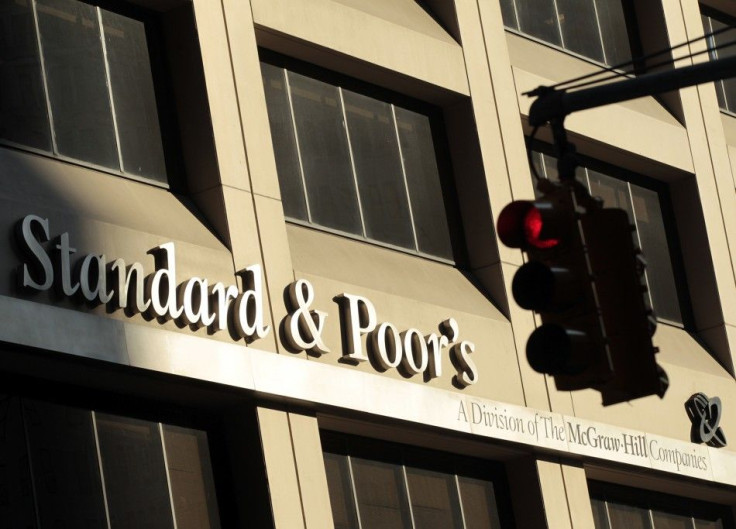Will S&P?s Downgrade Increase U.S. Home Mortgage, Auto Loan Interest Rates?
Analysis

A question that's no doubt on the mind of many American citizens/investors following Standard & Poor's (S&P) historic and controversial downgrade of the U.S. Government's credit rating to AAA to AA+ is, "Will the S&P downgrade affect interest rates in the United States and the interest rates I pay?"
The short answers to the two-part question are: 1) yes and 2) probably.
A Downgrade Shocker
S&P, one of three major credit rating agencies for institutions/governments, has removed the United States from its list of risk-free borrowers. Essentially, S&P, citing the ideological divide between the U.S.'s two, major political parties, the Democratic and Republican parties, has reduced its confidence in public officials' ability to manage its finances.
"The downgrade reflects our view that the effectiveness, stability, and predictability of American policymaking and political institutions have weakened at a time of ongoing fiscal and economic challenge," S&P said, in a statement.
In other words, S&P argues lending to the U.S. Government, despite Tuesday's $2.4 trillion U.S. debt deal agreement between President Barack Obama and Congressional Republicans, carries a higher risk than a year ago.
U.S. Treasury: S&P Got It Wrong
It should be underscored that the Obama administration, through the U.S. Treasury Department, rejects S&P's analysis and conclusion, noting that S&P had made a significant mathematical mistake in a document that it provided to the U.S. Government.
"A judgment flawed by a $2 trillion error speaks for itself," a U.S. Treasury Department spokeswoman said, The New York Times reported Saturday.
Prior to the S&P downgrade, for all intents and purposes, institutional investors equated investing in U.S. debt, often in the form of 10-year U.S. Treasury bonds, was as good as depositing money in an FDIC-insured bank, or what institutional investors call "holding cash."
For that reason, among other factors, the interest rate the U.S. Government was charged for loans was low -- very low: the U.S. Government had to pay just 2.57 percent to borrow money for 10 years, despite having a large budget deficit and national debt.
With the Friday night downgrade, S&P is saying investing in U.S. Government debt may not be as good as cash.
As a result, investors may ask for a higher interest rate, given the higher risk, and that could push up interest rates throughout the financial system, including in the U.S., loans for home mortgages, car loans, student loans, small business loans and credit card rates.
Of course, it's not 100 percent certain that interest rates will move higher, but they probably will.
U.S. Bonds: A Benchmark
U.S. Federal Reserve Chairman Ben Bernanke described very well, in Congressional testimony last month, the role U.S. Government debt plays in the interest rate charged for other loans/debt.
Bernanke said U.S. Government bonds are considered the lowest-risk bond investment class in the world, and serve as a benchmark for interest rates for other, more-risky bond and asset classes. If investors can't count on the safety of U.S. debt, they would ask for higher interest on that asset class, pushing up the interest rates on other assets, among other ripple effects, he said.
In layman's terms, many lenders will say, "Hey, if a U.S. Government bond is now a riskier investment, the money we lend you for your 30-year home mortgage is now a riskier investment, so I have to charge you a higher rate of interest. Sorry, but those are the market conditions today."
As of Friday, the average interest rate for a 30-year, fixed-rate mortgage was 4.31 percent; for a 15-year mortgage, it was 3.48 percent, as tabulated by bankrate.com. For a 48-month new car loan, it was 4.85 percent; for a 48-month used car loan, it was 4.37 percent. For credit cards, for borrowers with outstanding credit, it was 10.83 percent.
In short, S&P's downgrade may very well increase the borrowing costs for governments, businesses, home buyers, and consumers -- something that would further slow the barely-growing U.S. economy, complicating policy makers' efforts to increase job growth and address the nation's biggest problem -- its high 9.1 percent unemployment rate.
Market/Economic Analysis: What an unpleasant Friday night surprise. Several factors, not just a rating from a ratings agency, determine how much lenders charge a government -- in this case the U.S. government -- for 10-year loans.
Moreover, investors should keep in mind that the two, other, major ratings agencies, Moody's and Fitch, have not downgraded the United States, hence for the above reasons, it's hard to predict how much U.S. interest rates will rise.
Was the S&P downgrade premature? The calculation forwarded here is that it was. True, the U.S. debt deal did not lead to the $4 trillion federal spending reduction that many in financial circles had argued was necessary, but the conclusion that the United States -- one of the richest countries in the world, in terms of investment capital, with a remarkable scientific and technological edge in many sectors, and with an enormous productive capacity, and with a slumping economy that's still generating $14 trillion in GDP -- is somehow not capable of paying down its debt at an accelerated rate, is a pretty thin economic and amortization argument.
© Copyright IBTimes 2024. All rights reserved.











